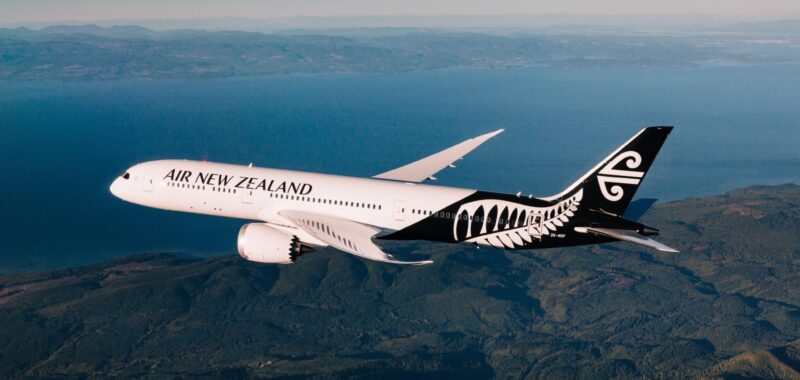
Skift Take
Air New Zealand’s CEO cited multiple factors for the decision, ranging from a lack of regulatory support to supply chain problems.
Air New Zealand is pulling out of an international sustainability program. The flag carrier confirmed on Tuesday that it will abandon its 2030 carbon target and withdraw from the Science Based Targets initiative (SBTi).
The move makes the company the first major airline anywhere in the world to drop such a high-profile climate goal.
It was only two years ago that Air New Zealand adopted a target to cut its 2019-level emissions by 29% before the end of the decade. This represented a hugely ambitious goal compared to the 5% reduction agreed by the global aviation industry.
Why is Air New Zealand Scrapping the Target?
The Auckland-based airline said Tuesdayâs decision followed âcareful consideration.â It added that âmany of the levers needed to meet the target, including the availability of new aircraft, the affordability, and availability of alternative jet fuels, and global and domestic regulatory and policy support, are outside the airlineâs direct control and remain challenging.â
The airline’s tone and messaging feels far removed from 2022. Just two years ago, the airline launched special âFlight NZ0â branding as part of its wider net-zero campaign. On the landing page, the company boldly stated: “Flight NZ0 is not just a name, it’s a commitment.”
By Tuesday morning, the once-flashy NZ0 micro-site was offline, replaced with an all-white screen with the message: âThis site is currently under review.â
What Has the CEO Said?
Greg Foran, Air New Zealand CEO, said external factors were a major factor in scrapping the 2030 target: âIn recent months, and more so in the last few weeks, it has become apparent that potential delays to our fleet renewal plan pose an additional risk to the targetâs achievability.
âIt is possible the airline may need to retain its existing fleet for longer than planned due to global manufacturing and supply chain issues that could potentially slow the introduction of newer, more fuel-efficient aircraft into the fleet. As such and given so many levers needed to meet the target are outside our control, the decision has been made to retract the 2030 target and withdraw from the SBTi network immediately,” Foran added.
What is the Science Based Targets Initiative?
The SBTi is a global accreditation organization that endorses emissions reduction targets. The partnership spans various major NGOs including the United Nations, the World Wide Fund for Nature, and the climate charity CDP.
It helps the private sector set science-based emissions reduction targets by providing technical assistance and expert resources. Notably, independent assessment and validation of the targets are a key part of the accountability process.Â
For its part, Air New Zealand says work has already started to consider âa new near-term carbon emissions reduction target that could better reflect the challenges relating to aircraft and alternative jet fuel availability within the industry.â
Given the wider headwinds the airline is facing – both internally and externally – it remains to be seen how ambitious these will be.
Is Net-Zero by 2050 Still on the Cards?
Therese Walsh, chair of Air New Zealand, said the company remains committed to reaching its 2050 net-zero carbon emissions target. However, critics have argued that the 29% reduction by 2030 was critical to meeting the 2050 goal.
âOur work to transition away from fossil fuels continues, as does our advocacy for the global and domestic regulatory and policy settings that will help facilitate Air New Zealand and the wider aviation system in New Zealand, to do its part to mitigate climate change risks,â Walsh added.
While Air New Zealandâs U-turn is dramatic, it isnât the first time an airline has tweaked its sustainability policies. In 2022, British low-cost carrier EasyJet faced a backlash for phasing out its carbon offset scheme.
Speaking at the time, its CEO said this was because the SBTi, which easyJet used to guide its roadmap, does not take into account out-of-sector carbon offsets. Instead, the airline claimed it would see a 78% drop in emissions by 2050 through investments in more efficient aircraft, sustainable aviation fuel, and other operational efficiencies.
Carbon offsets are appealing because they can be implemented at scale right now. Even Taylor Swift’s global tour has used them. But the market has faced criticism and has been described as the âwild west.â
Earlier this month, Skift Research published a major new report aiming to sort the fact from the fiction. Get more information here:
Airlines Sector Stock Index Performance Year-to-Date
What am I looking at? The performance of airline sector stocks within the ST200. The index includes companies publicly traded across global markets including network carriers, low-cost carriers, and other related companies.
The Skift Travel 200 (ST200) combines the financial performance of nearly 200 travel companies worth more than a trillion dollars into a single number. See more airlines sector financial performance.
Read the full methodology behind the Skift Travel 200.

